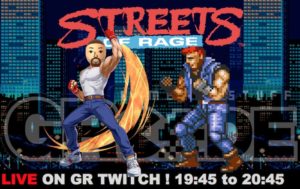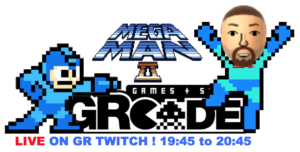
Released in 1991 for the Sega Mega Drive, Streets of Rage is a classic and fondly-remembered retro franchise which spawned two direct sequels and retained its staying power through a steady series of compilations/re-releases over the years, the most recent being for the Nintendo 3DS in 2013.
Streets of Rage is a side-scrolling beat ‘em up in the same vein as Golden Axe or Double Dragon. Players fight their way through waves of bad guys and end-of-level bosses until the end or they run out of lives. Players choose one (or in co-op, two) stereotypical tough guy ex-cop characters from a selection of 3 to take down the crime syndicate of the unimaginatively-named ‘Mister X’. Axel is the all-rounder, Adam is strong but slow and Blaze is fast but the weakest of the group. The simple fighting mechanics are solid and fun and its arcade heritage is clear through mechanics like weapon pick-ups and the powerful police support abilities replacing the screen-clearing magic spells of Golden Axe.
Streets of Rage lays the foundation of the series’ great visual style which would be later refined in Streets of Rage 2. The sprites and backgrounds really convey the game’s sleazy urban atmosphere, both in their quality and in additional touches such as the wind blowing posters in the background. The game’s soundtrack is equally brilliant; a mixture of dance and R’n’B chip tunes that fit with the mood and aesthetic and, like the graphics, would be developed even further in Streets of Rage 2.
Streets of Rage’s art and style became an inspiration for other games at the time and have become pop-culture tropes in their own right. Streets of Rage came out at a time when console hardware was becoming sufficiently powerful to offer arcade-quality games and experiences in the home, overcoming the limitations of the Master System and NES. It’s a shame Sega aren’t willing to develop a new Streets of Rage, their only interaction with the brand being to file a cease and desist action on a fan-made game that was near to release.
Maybe Sega’s current approach to letting external developers work on Sonic Mania means this attitude is changing, however the poorly-received Double Dragon 4 shows that making a new instalment of a retro beat ‘em up is not as straightforward as it seems. Along with Daytona USA, Sega’s output in this period through games like Streets of Rage helped defined the cultural memory of gaming, and even if it is a short experience when removed from its coin-guzzling arcade origins, it is still well worth experiencing today.
Verdict: Highly Recommended.

